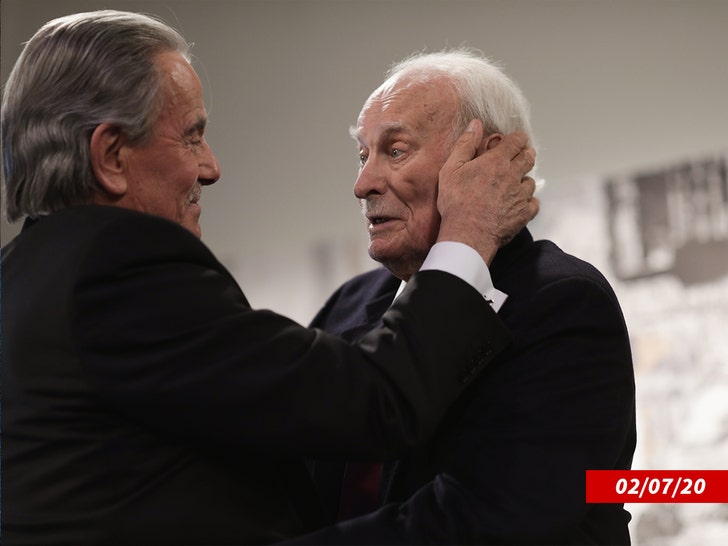Lifestyle
A First Try of Apple’s $3,500 Vision Pro Headset

I got a sneak peek into Apple’s vision for the future of computing on Monday. For about half an hour, I wore the $3,500 Vision Pro, the company’s first high-tech goggles, which will be released next year.
I walked away with mixed feelings, including a nagging sense of skepticism.
On one hand, I was impressed with the quality of the headset, which Apple bills as the beginning of an era of “spatial computing,” where digital data blends with the physical world to unlock new capabilities. Imagine wearing a headset to assemble furniture while the instructions are digitally projected onto the parts, for instance, or cooking a meal while a recipe is displayed in the corner of your eye.
Apple’s device had high-resolution video, intuitive controls and a comfortable fit, which felt superior to my experiences with headsets made in the last decade by Meta, Magic Leap, Sony and others.
But after wearing the new headset to view photos and interact with a virtual dinosaur, I also felt there wasn’t much new to see here. And the experience elicited an “ick” factor I’ve never had before with an Apple product. More on this later.
Let me start from the beginning. After Apple unveiled the headset on Monday, its first major new release since the Apple Watch in 2015, I was permitted to try a preproduction model of the Vision Pro. Apple staff led me to a private room at the company’s Silicon Valley headquarters and sat me on a couch for a demo.
The Vision Pro, which resembles a pair of ski goggles, has a white USB cable that plugs into a silver battery pack that I slipped into the pocket of my jeans. To put it on my face, I turned a knob on the side of the headset to adjust the snugness and secured a Velcro strap above my head.
I pressed down on a metal button toward the front of the device to turn it on. Then I ran through a setup process, which involved looking at a moving dot so the headset could lock in on my eye movements. The Vision Pro has an array of sensors to track eye movements, hand gestures and voice commands, which are the primary ways to control it. Looking at an icon is equivalent to hovering over it with a mouse cursor; to press a button, you tap your thumb and index fingers together, making a quick pinch that is equivalent to clicking a mouse.
The pinch gesture was also used for grabbing and moving around apps on the screen. It was intuitive and felt less clunky than waving around the motion controllers that typically come with competing handsets.
But it raised questions. What other hand gestures would the headset recognize for playing games? How good will voice controls be if Siri’s voice transcription on phones currently doesn’t work well? Apple isn’t sure yet what other gestures will be supported, and it didn’t let me try voice controls.
All the many uses?
Then came time for the app demos to show how the headset might enrich our everyday lives and help us stay connected with one another.
Apple first walked me through looking at photos and a video of a birthday party on the headset. I could turn a dial near the front of the Vision Pro counterclockwise to make the photo backgrounds more transparent and see the real world, including the Apple employees around me, or turn it clockwise to make the photo more opaque to immerse myself.
Apple also had me open a meditation app in the headset that showed 3-D animations while soothing music played and a voice instructed me to breathe. But the meditation couldn’t prepare me for what was coming next: a video call.
A small window popped up — a notification of a FaceTime call coming from another Apple employee wearing the headset. I stared at the answer button and pinched to take the call.
The Apple employee in the video call was using a “persona,” an animated 3-D avatar of herself that the headset created using a scan of her face. Apple portrays videoconferencing through the personas as a more intimate way for people to communicate and even collaborate in virtual space.
The Apple employee’s facial expressions looked lifelike and her mouth movements synchronized with her speech. But because of how her avatar was digitally rendered, with the uniform texture of her face and the lack of shadows, I could tell it was fake. It resembled a video hologram I had seen in sci-fi movies like “Minority Report.”
In the FaceTime session, the Apple employee and I were supposed to collaborate on making a 3-D model in an app called Freeform. But I stared at it blankly, thinking about what I was seeing. After three years of being mostly isolated during the pandemic, Apple wanted me to engage with what was essentially a deepfake video of a real person. I could feel myself shutting down. My “ick” sensation was probably what technologists have long described as uncanny valley, a feeling of unease when a human sees a machine creation that looks too human.
A technological feat? Yes. A feature I would actually want to use with others every day? Probably not anytime soon.
To wrap the demonstration with something fun, Apple showed a simulation of a dinosaur that moved toward me when I reached my hand out. I have seen more than my fair share of digital dinosaurs in virtual reality (almost every headset maker that’s given me a VR demo has shown a Jurassic Park simulation in the last seven years) and I was not excited about this.
Real people
After the demo, I drove home and processed the experience during rush hour.
Over dinner, I talked to my wife about the Vision Pro. The Apple goggles, I said, looked and felt better than the competing headsets. But I wasn’t sure that mattered.
Other headsets from Meta and Sony PlayStation were much cheaper and already quite powerful and entertaining, especially for playing video games. But whenever we had guests over for dinner and they tried the goggles on, they lost interest after less than half an hour because the experience was exhausting and they felt socially disconnected from the group.
Would it matter if they could twist the dial on the front of the headset to see into the real world while wearing it? I suspect it would still feel isolating, because they would probably be the only person in a room wearing one.
But more important to me was the idea of connecting with others, including family members and colleagues, through Apple headsets.
“Your mom is getting old,” I said to my wife. “When you’re FaceTiming with her, would you rather see her deepfake digital avatar, or a crummier video call where she’s holding the phone camera up to her face at an unflattering angle?”
“The latter,” she said without hesitation. “That’s real. Although, I’d much rather see her in person.”

Lifestyle
This wholesome banger from a group of Irish kids is the spark you need

Creative Ireland
YouTube
Music fans, have we got a new, totally infectious bop for you: “The Spark,” a song created by a group of kids in Cork, Ireland. “I searched for my spark and I found it,” they exuberantly sing over a vibrant techno beat. They let their rhymes fly, too: “Making bangers at a young age,” one girl raps, “My pen setting fire to the page.”
As one listener enthused on X: “They had no business putting out something this deadly.”
“The Spark” was created by Rhyme Island, a youth rap initiative in Cork. The kids worked with a local producer named GMCBeats and The Kabin Studio, a music and creativity-focused nonprofit in the Knocknaheeny suburb of Cork.
They made the song in advance of Cruinniú na nÓg, an annual “national free day of creativity for young people” in Ireland. It features over 1,000 free events for kids and teenagers across Ireland, sponsored by the Irish government and supported by the Irish public broadcaster RTE. This year’s Cruinniú na nÓg activities take place on Saturday, June 15.
Rhyme Island’s video for “The Spark” was released by Creative Ireland, the Irish government initiative behind Cruinniú na nÓg. The video is just as cheery and wholesome as the song: The band of kids bounce down the aisle of a school bus and zip along a Cork sidewalk, decked out in colorful bucket hats and shades.
While “The Spark” does not yet seem to be available on digital platforms, Rhyme Island has a playlist of their other work on SoundCloud.
Lifestyle
'9 to 5' Star Dabney Coleman Dead at 92

Dabney Coleman — an absolute legend in Hollywood best known for his villainous turn in “9 to 5” — has died … TMZ has learned.
The actor’s daughter, Quincy Coleman, tells TMZ … “My Father, Dabney Wharton Coleman, took his last earthly breath peacefully and exquisitely in his home on Thursday May 16th, 2024 at 1:50 PM.”
She adds, “My father crafted his time here on earth with a curious mind, a generous heart, and a soul on fire with passion, desire and humor that tickled the funny bone of humanity. As he lived, he moved through this final act of his life with elegance, excellence and mastery.”

Finally, Quincy says … “A teacher, a hero, and a king, Dabney Coleman is a gift and blessing in life and in death as his spirit will shine through his work, his loved ones and his legacy…eternally.”
A cause of death was not revealed. However, Dabney reportedly canceled an April appearance at the Chiller Theatre in New Jersey over his ailing health.
In addition to his memorable work in “9 to 5,” Dabney famously played the sexist director in the 1982, Dustin Hoffman-led comedy, “Tootsie.”
He notably had almost 200 acting credits on his resume, appearing in a number of TV shows and films over the years … including “You’ve Got Mail,” “WarGames,” “Buffalo Bill, “Recess,” etc.
His last acting credit was for an episode of “Yellowstone,” in which he acted opposite Kevin Costner while playing John Dutton Sr.
Throughout his 60-year career, Dabney was nominated for 6 Emmy awards — winning once for his work in 1987’s “Sworn to Silence.” He also won a Golden Globe in 1988 for “The Slap Maxwell Story” and nabbed 2 SAG Awards alongside the ensemble of “Boardwalk Empire.”
TMZ.com

AUGUST 2018
We caught up with Dabney in Hollywood back in August 2018 … where he reacted to rumors about a possible “9 to 5” sequel. While he didn’t seem against the idea at the time … he stayed tight-lipped on whether a project was in the works.
Dabney — who was married and divorced twice — is survived by his 4 children. He was 92.
RIP
Lifestyle
From college exposés to family secrets, check out these new podcasts

NPR; KUT; NEPM; KCUR; KUOW

NPR; KUT; NEPM; KCUR; KUOW
There’s a lot to celebrate in May — Cinco de Mayo, graduation, Mother’s Day, Memorial Day. Add finding your new favorite podcast to the list with the NPR One team’s recommendations from across public media.
The podcast episode descriptions below are from podcast webpages and have been edited for brevity and clarity.
Wild Card – NPR


Part-interview, part-existential game show – this is Wild Card from NPR. Host Rachel Martin rips up the typical interview script and invites guests to play a game about life’s biggest questions. Rachel takes actors, artists and thinkers on a choose-your-own-adventure conversation that lets them open up about their fears, their joys and how they’ve built meaning from experience – all with the help of a very special deck of cards.
Start listening to, “Why Jenny Slate sometimes feels like a ‘terminal optimist’.”
Ten Thousand Things with Shin Yu Pai – KUOW


This season features the stories of trailblazing Asian American women and the resilience of Asian American communities, even in the face of endangerment. Three of this season’s stories take place in Seattle’s Chinatown-International District Neighborhood, with help from the Wing Luke Museum. Featured guests include poet and former MMA cage fighter Jenny Liou; Seattle chef Tiffany Ran; and flutist Leanna Keith; among others. New episodes drop on Tuesdays. Ten Thousand Things: In many Chinese sayings, “ten thousand” is used in a poetic sense to convey something infinite, vast, and unfathomable. For Shin Yu Pai – award-winning poet and museologist – the story of Asians in America is just that. Ten Thousand Things is a podcast about modern-day artifacts of Asian American life and the stories they reveal, created and hosted by Shin Yu Pai and produced by KUOW (Seattle’s NPR station). Ten Thousand Things is a vibrant, diverse, and bittersweet celebration of Asian America … and a challenge for us all to reimagine stories of the past and future.
Listen to “Teardrop Lip.”
StoryCorps – NPR


In this season of the StoryCorps Podcast, we delve into what happens when individuals interview their parents, partners, or children — the ones who matter the most to them. Unlike a journalist, it’s someone they deeply cherish asking the questions. These stories are about people who have forged their own paths, done things their own way. Join us as we explore this archive, unveiling an unprecedented and candid portrayal of contemporary American life.
Listen to episode 1, “My Way.”
NPR Explains… – NPR

We’ve heard rhetoric about a “crisis at the border” and a “surge of migrants pouring into the U.S.” What’s happening at the border and what makes immigration such a key issue? NPR Explains is back to help break down U.S. immigration policy, conditions at the U.S.-Mexico border and how the system affects Americans. Join host and immigration correspondent Jasmine Garsd in NPR Explains: Immigration, a podcast series exclusively on the NPR app, which is available on the App Store or Google Play.
Start listening to part one, “Why is immigration a key issue?”
College Uncovered – GBH


In a world focused on getting in, do you know what you’re getting into? College Uncovered, from GBH News in collaboration with The Hechinger Report, pulls back the ivy on American higher education, exposing the problems, pitfalls and risks — and helping you navigate them. If you wonder how college really works, subscribe now. Because it’s a real education.
Start listening to episode 1, “Buyer Beware.”
The Secrets We Keep – NEPM


The stories we don’t tell, what they say about our world, and what they do to our minds — a new podcast from NEPM. Over five episodes, this limited series uses the lens of secrets to explore societal taboos and stigmas around sexual orientation, abortion, genetic origins, family scandals, and money — through the voices of secret-keepers, those kept in the dark, and history and social science experts (starting with the host’s family secret.)
Listen to part one, “Anatomy of a Secret.”
In Our Headphones – KEXP


Introducing KEXP’s newest music discovery podcast. In Our Headphones brings you five song recommendations every Monday, straight from KEXP’s DJs and Music Directors. We learn stories and insights about the artists, make connections between the music and the world around us, and get to know the diverse roster of DJs that make up the KEXP airwaves. Join hosts Janice Headley and Isabel Khalili on this never-ending journey of music discovery.
Listen to episode 1, “Cheryl Waters: Brimheim, English Teacher, Lair.”
Pause/Play – KUT


Up From Dust – KCUR


Trees are swallowing prairies. Bees are starving for food. Farmland is washing away in the rain. Humans broke the environment — but we can heal it, too. Up From Dust is a new podcast about the price of trying to shape the world around our needs, as seen from America’s breadbasket: Kansas. Hosts Celia Llopis-Jepsen and David Condos wander across prairies, farm fields and suburbia to find the folks who are finding less damaging, more sustainable ways to fix our generational mistakes.
Start listening to “When good plants turn bad.”
Untangled – WOSU


Body Electric – NPR


NPR’s Jessica Green and Jack Mitchell curated and produced this piece.
-

 Politics1 week ago
Politics1 week agoRFK Jr said a worm ate part of his brain and died in his head
-

 World1 week ago
World1 week agoPentagon chief confirms US pause on weapons shipment to Israel
-

 News1 week ago
News1 week agoStudents and civil rights groups blast police response to campus protests
-

 World1 week ago
World1 week agoConvicted MEP's expense claims must be published: EU court
-

 Politics1 week ago
Politics1 week agoCalifornia Gov Gavin Newsom roasted over video promoting state's ‘record’ tourism: ‘Smoke and mirrors’
-

 Politics1 week ago
Politics1 week agoOhio AG defends letter warning 'woke' masked anti-Israel protesters they face prison time: 'We have a society'
-

 News1 week ago
News1 week agoNine Things We Learned From TikTok’s Lawsuit Against The US Government
-

 Politics1 week ago
Politics1 week agoBiden’s decision to pull Israel weapons shipment kept quiet until after Holocaust remembrance address: report




















